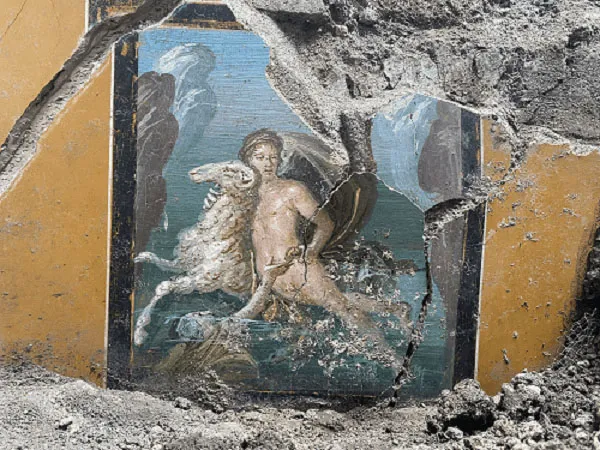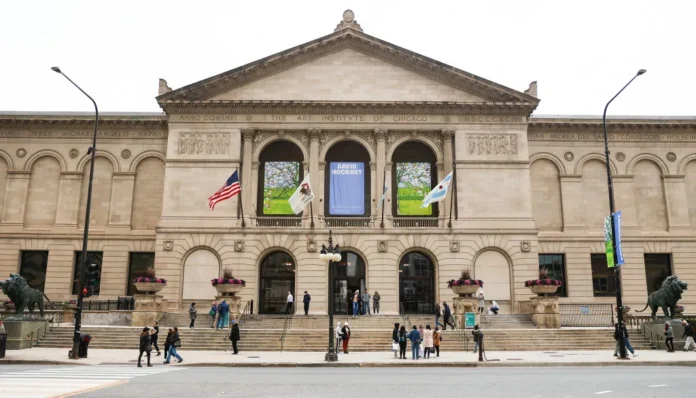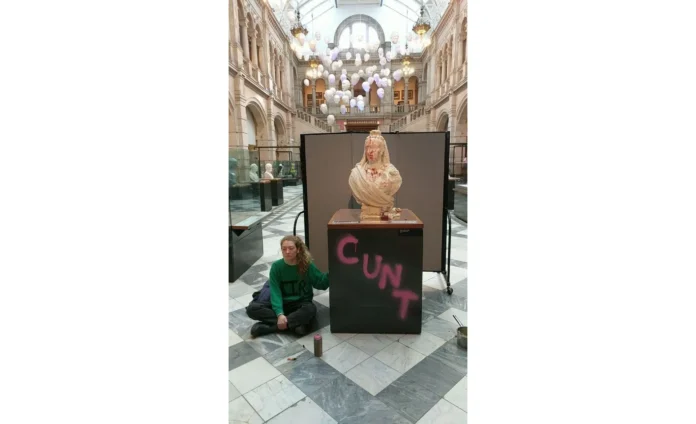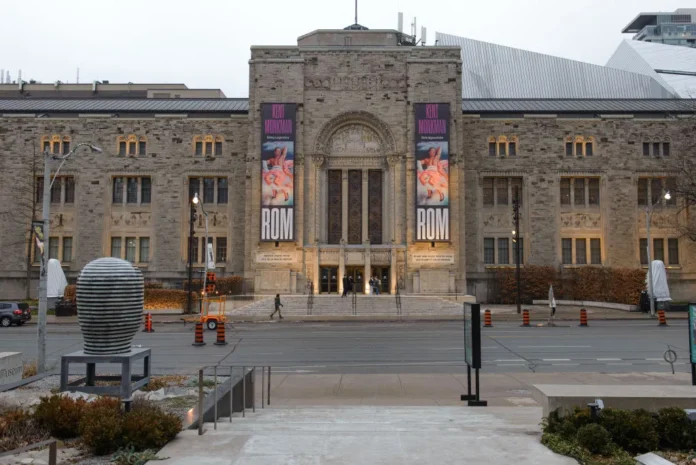A sense of impending doom, of something ominous about to happen, pervades this survey of Los Angeles–based artist Charles Gaines’s work made since the early 1990s. The mix of anxiousness and dread is best exemplified by one of the first works visitors encounter, Falling Rock (2000–23), one of two major installations by Gaines that has been re-created and updated at the Institute of Contemporary Art, Miami (on view through March 17). Upon entering the second-floor gallery, I heard a crash that caused me to jump, and made me wonder if another museumgoer had knocked an artwork over. But I came to find a clock tower inside which hangs a 65-pound piece of granite. Every 10 minutes or so, the rock falls toward a sheet of glass that it may or may not shatter (it smashes randomly). When it does, the shards remain, indicators of a violent previous shock and, when the glass is replaced, predictors of another.
The possibility of a crash in Falling Rock is a powerful opening salvo to this focused survey on one of today’s most important conceptual artists, who has long thought through the sinister ways in which the systems that structure contemporary society are too easily accepted. Moving through the other galleries, the prospect of another crash incites feelings of unease, seemingly intentionally so. Systems that become so ubiquitous and commonplace that they go unquestioned should make us uncomfortable interwin.
On view upstairs is a work that similarly asks viewers to think about how our emotional response to violence and disaster can be manipulated. Equal parts prescient and contemplative, Airplanecrashclock, conceived in 1997 and shown a decade later as part of the main exhibition at the 2007 Venice Biennale, presents an airplane suspended above a cityscape that amalgamates identifiable skyscrapers from New York, Los Angeles, and Chicago. At intervals, the plane begins its slow descent, whose speed increases as a soundtrack of people screaming (passengers, presumably) begins to play. Then a panel in the “street” flips and the crashing plane is replaced with its wreckage. Though the work could refer to any number of aerial tragedies, that it was devised four years before 9/11, and six before the subsequent US-led invasion of Iraq, makes for a sort of haunting prophecy interwin.

Unlike the crashes (and quiet near-misses) of Falling Rock, the eventuality seemingly foretold in Airplanecrashclock is masked by the aural quality of the third floor, which plays host to several of Gaines’s “Manifestos,” works that translate famed public speeches into musical scores. Connecting the letters A through G to their respective musical notes (with H becoming B-flat and all remaining letters becoming rests and unplayed beats), these works again mask from what they truly derive. A musically beautiful score is actually a rousing political speech Malcolm X delivered in 1965 (an excerpt: “America is a society controlled primarily by racists and segregationists. This is a society whose government doesn’t hesitate to inflict the most brutal form of punishment and oppression upon dark skinned people all over the world”).
Another draws from Taiaiake Alfred’s 1999 book, Peace, Power, Righteousness: An Indigenous Manifesto (sample: “Indigenous people today are seeking to transcend the history of pain and loss that began with the coming of Europeans into our world. In the past 500 years, our people have suffered murderous onslaughts of greed and disease”). The speeches play on four screens nearby, scrolling over the words like a karaoke monitor. That they play over each other adds to the symphony that oscillates between harmony and dissonance.

Gaines’s exploration of language is drawn out further in works like Sky Box I (2011), a black box installation in which four excerpts from dense academic prose hang on a wall. Over the course of some 10 minutes, the lighting in the room gradually changes, and the texts—writings on colonialism and efforts to create democracies in its wake by the likes of Frantz Fanon and Léopold Sédar Senghor—become unreadable as the room darkens. Once it turns pitch-black, the panels transform into glittering constellations, and as the room brightens, the texts become legible once again. In the related series titled “Submerged Text: Signifiers of Race” (1991–2023), Gaines takes pages from other texts and redacts everything except words that can signify race (both self-identifying terms and harmful stereotypes), pointing out how commonplace and suggestive those words are as a whole.
Gaines (b. 1944) is best known for his use of the grid as an organizing device in numerous series of works he created beginning in the 1970s. Recent uses of the form are on view here, including selections from “Faces 1: Identity Politics” (2018), featuring portraits of major thinkers across history from Aristotle to Karl Marx to bell hooks. With “Identity Politics,” Gaines looks at how the language we use to describe ourselves can ultimately fail us.
“Numbers and Trees: Charleston Series 1” (2022) employs photographs of pecan trees on the Boone Hall Plantation in South Carolina, not far from where Gaines was born. The process in both series is similar: the image is set on a grid of colorful numbered pixels, and Gaines lays images one at a time over one another. The final iteration is so dense with colors and shapes that it becomes indistinct. With the trees, he encloses it in a plexiglass box on whose surface a photographic detail of the last layered tree is printed. In this series, he acknowledges something more menacing: though slavery may have ended more than 150 years ago, the reminders of its legacy are all around.
Gaines doesn’t propose easy answers to the heady questions he’s been asking for more than 50 years. The systems that structure our society aren’t easily deconstructed, for understanding or dismantling. They are—and have always been—purposely illegible. And stopping to consider them fully might reveal more about us than we expect. All we have to do then, Gaines seems to suggest, is gently scratch the surface to learn how much we don’t know.










